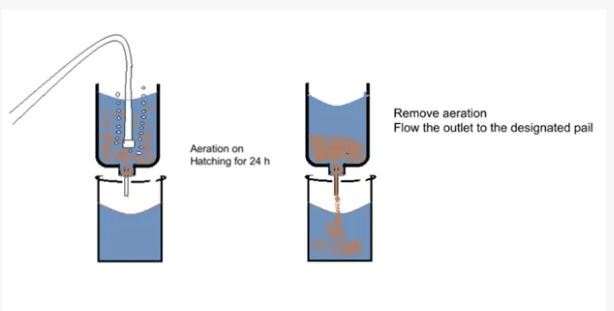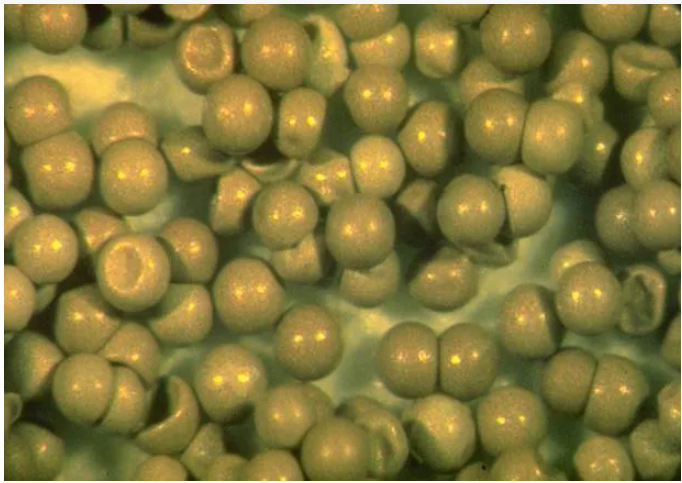Artemia are valuable as live feeds for the early life stages of shrimp. While they might be expensive, if used correctly – as explained below – they should fully justify the investment
The use of Artemia, or brine shrimp, as live feed in shrimp farming is commonly practised in hatcheries. In early life stages, shrimp larvae prefer live feed, as it is easier for their undeveloped gut to digest, and it provides high nutritional value. Artemia are also easy to use, have a long shelf life and can be hatched by the shrimp farmers when needed. Nauplii are the most common stage of Artemia used as live feeds, particularly in the hatchery and nursery phases.
Artemia still form a core component of hatchery nutrition
Why Artemia are important
In the early days of culture, Artemia are critical for helping the post-larvae (PL) acclimatise, as well as in providing nutrition and health benefits. As PLs are fed with Artemia in the hatcheries, using formulated commercial feed right after stocking would shock their gut systems. Feeding Artemia at the early stage of culture may help them transition more smoothly. And the rich nutrient content, such as essential amino acids and polyunsaturated fatty acids, helps to boost their health and enhance their growth.
The common practice in Indonesia, according to Wawan Siswanto, the Indonesian sales manager of INVE Aquaculture, is for hatcheries to give farmers enough Artemia for one day, as a bonus for the purchase of their PL. Although the use of brine shrimp is still limited, “more shrimp farmers are using Artemia as an integral part of the early days of shrimp culture,” he says. Farmers usually use Artemia for seven days, with a ratio of one can of Artemia per million PL.
Artemia provision is only recommended in limited volumes and for a short period. We recommend the use of Artemia in the nursery and grow-out phase for three to seven days. As well as the high cost, excessive use of Artemia may actually cause more harm than good, because uneaten Artemia may compete for resources with the PL and their metabolite excretion may also deteriorate water quality. Artemia can also carry diseases, so it is important to ensure that your supply comes from a trusted, biosecure source.
While the use of Artemia requires considerable investment, the robust health and better growth of the shrimp should offset the cost, safeguard the overall cycle and provide higher profit down the line.
Feeding rates
The recommended feeding rate is 100 nauplii per shrimp, per day, administered over two to three feeding sessions. One gram of Artemia cysts equates to approximately 180,000 nauplii. The amount of Artemia cysts needed for a pond depends on the number of PL.
Let’s say we have 1 million PL stocked, how many grams of cysts do we need? Simply multiply the amount of PL by 100, which is the amount of nauplii per shrimp, and then divide it by 180,000. As a result, for 1 million PL, we need 556 grams of cysts per day.
How to hatch and use Artemia
Artemia cysts need to be hatched and harvested before being fed to the PL. This process requires a hatching and harvesting device (see Figure 1 below). Here is one way to do it.
Figure 1. Hatching and harvesting of Artemia
Hatching
- Use a hatching tube with a little outlet at the bottom
- Sterilise the tube using chlorine and fill it with water of 28-29 ppt salinity, which has been previously sterilised using chlorine and neutralised with sodium thiosulfate.
- Further neutralise the water using an aeration hose that has been previously sprayed with disinfectant and add NaHCO3 (sodium bicarbonate) to reach a water pH level of 8.4.
- Put the cysts into the water, at a rate of 1 gram of cysts for 2 litres of water. Apply strong aeration to make sure that the water is mixed perfectly.
- Put an LED lamp, with approximately 2,000 lux of illuminance, on top of the tube.
- Maintain the water temperature to always be below 30°C – ideally at 28°C to 29°C.
- Hatch the cysts for 24 hours.
Cyst shells should float to the surface of the water 24 hours after aeration
Harvesting
- Stop the aeration after 24 hours and wait for the cyst shells to float on the surface of the water.
- Remove the cyst shells using a scoop net, open the valve at the bottom and collect the nauplii by placing a pail or bucket below the hatching tube.
- Finally, the Artemia nauplii can be fed to the PL by directly pouring them into the nursery or grow-out ponds.
Conclusion
Despite the cost, Artemia should be considered by penaeid shrimp farmers with intensive or supra-intensive systems, due to its beneficial impacts for shrimp PL at the early stages of production. We only touched the surface of this topic and we hope we can dive deeper into the finer details in the near future.
By The Fish Site
Reference: https://thefishsite.com/articles/getting-the-most-out-of-artemia-in-shrimp-aquaculture
See more:
- Why The Shrimp Sector Is Set For Another Strong Year – 2022
- How Plankton Management Can Help Reduce Vibrios
- UAE Set For Region’s First Shrimp RAS

 Tiếng Việt
Tiếng Việt


